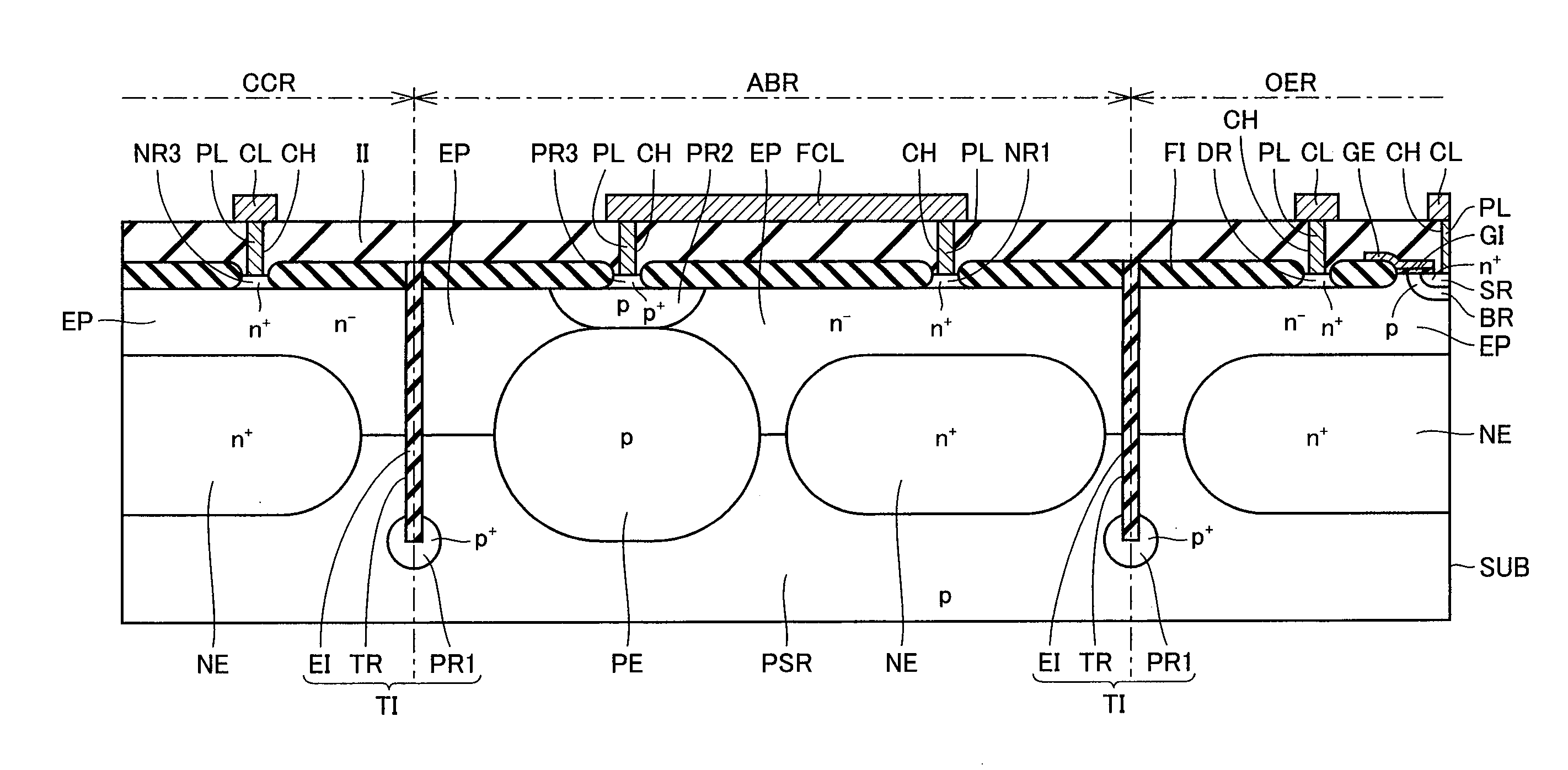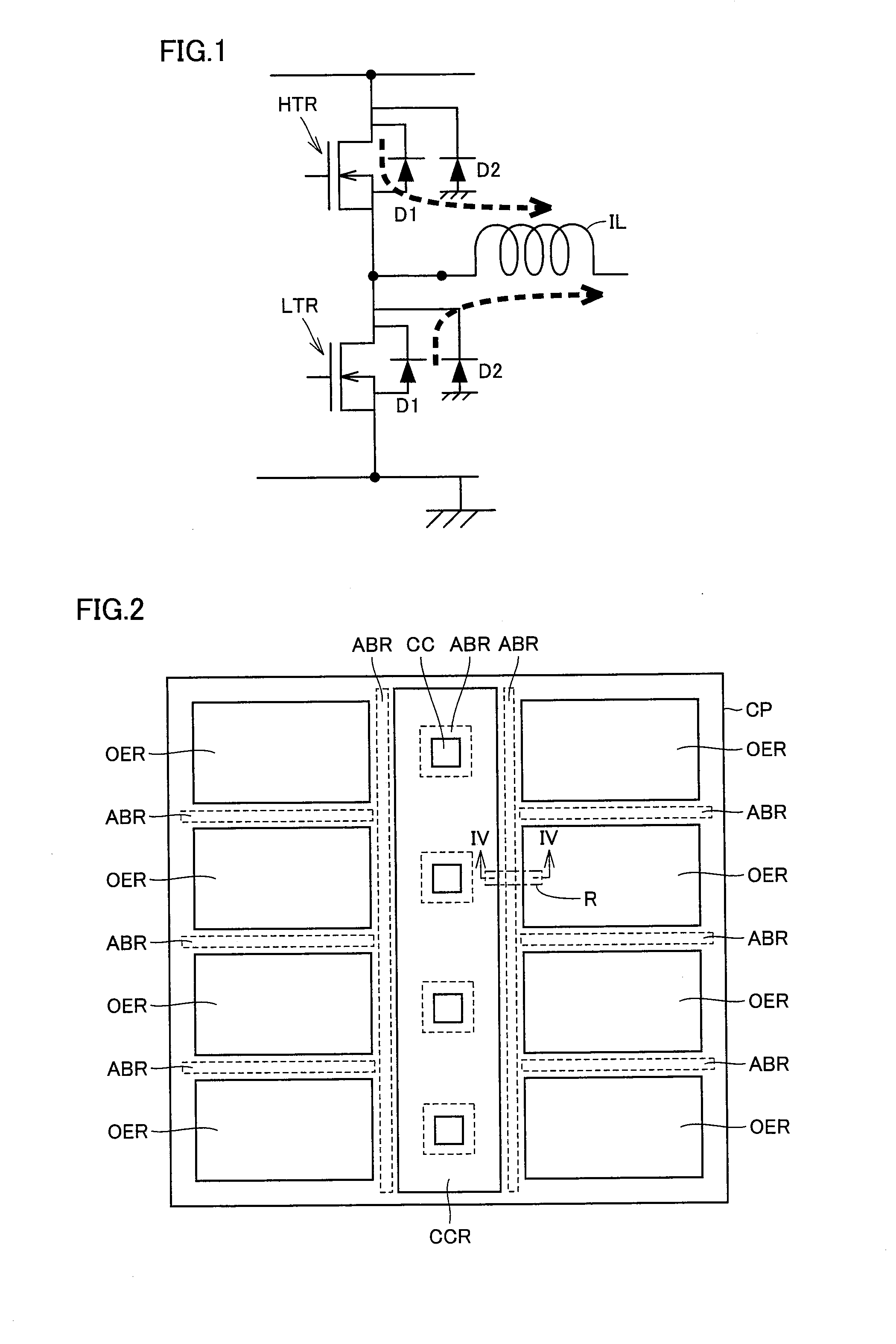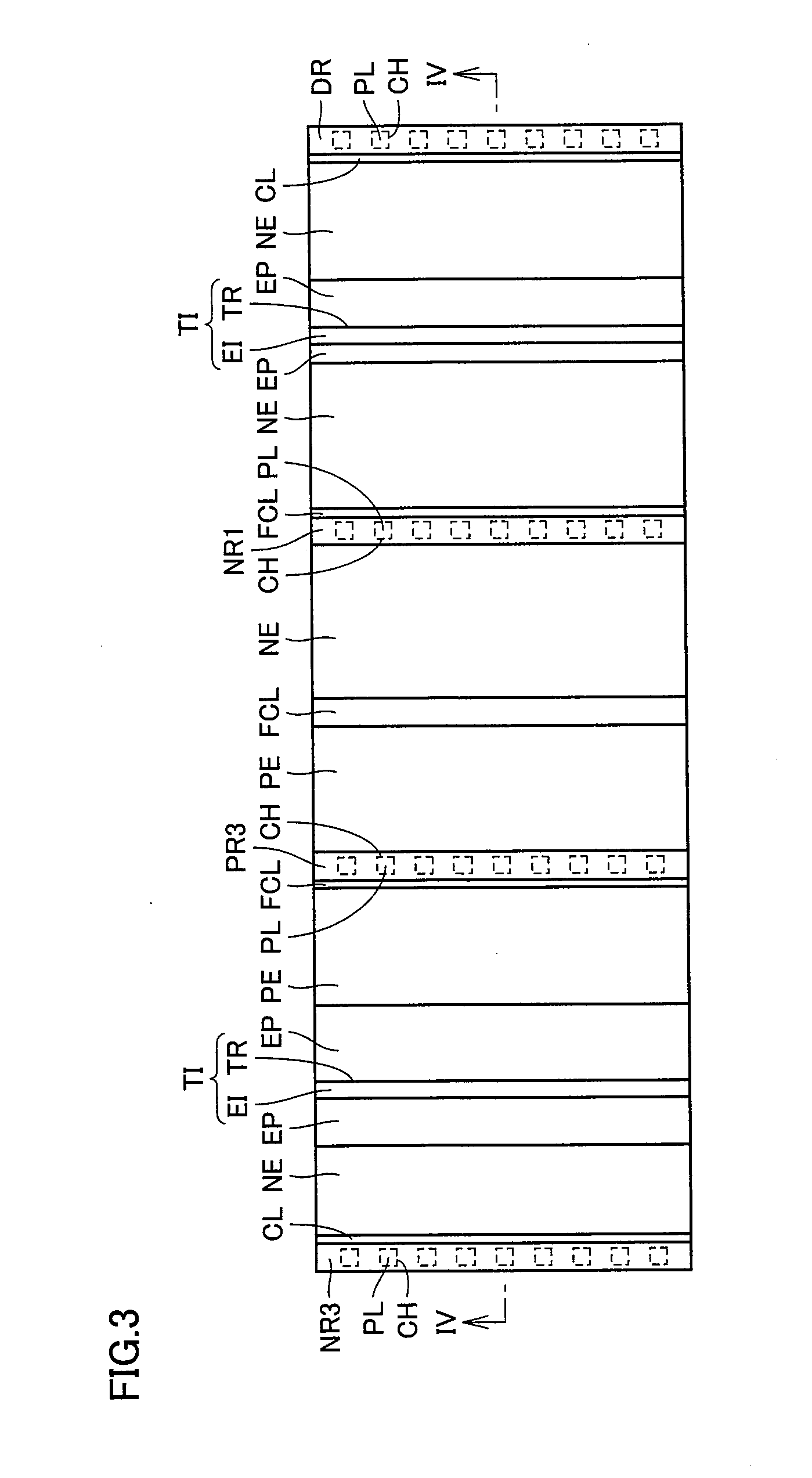Semiconductor device
a technology of semiconductor devices and carriers, applied in semiconductor devices, diodes, electrical apparatus, etc., can solve the problems that carriers based on counter-electromotive force injected from output elements cannot reach the other element formation region without bypassing, and increase the possibility of carriers disappearing in the course due to recombination, so as to achieve high-efficiency preventing the movement of electrons and reducing the size of chips
- Summary
- Abstract
- Description
- Claims
- Application Information
AI Technical Summary
Benefits of technology
Problems solved by technology
Method used
Image
Examples
first embodiment
[0035]Referring to FIG. 1, an output element formed in a semiconductor chip includes, for example, a high-voltage High side n-channel MOS (Metal Oxide Semiconductor) transistor (referred to as an nMOS transistor hereinafter) HTR and a high-voltage Low side nMOS transistor LTR.
[0036]A diode D1 is formed between the back gate and the drain of each of nMOS transistor HTR and nMOS transistor LTR. In addition, a diode D2 is formed between a p-type semiconductor substrate and the drain of each of nMOS transistor HTR and nMOS transistor LTR.
[0037]The source of nMOS transistor HTR and the drain of nMOS transistor LTR are electrically connected to each other and are electrically connected to an inductive load (for example, a coil) IL arranged on the outside of the semiconductor chip.
[0038]It is noted that an output element refers to an element electrically connected to an electronic device arranged on the outside of a semiconductor chip.
[0039]Referring to FIG. 2, a semiconductor chip CP has,...
second embodiment
[0102]Referring to FIG. 14, the configuration of the present embodiment differs from the configuration of the first embodiment shown in FIG. 4 in that a trench structure is added.
[0103]In the present embodiment, trench TR is formed to extend from the main surface of semiconductor substrate SUB to between buried p-type diffusion region PE and buried n+ diffusion region NE in active barrier region ABR. Buried insulating layer EI is formed in trench TR. In addition, p+ diffusion region PR1 is formed to surround the lower end part of trench TR.
[0104]This trench TR passes through n− epitaxial layer EP to reach p-type impurity region PSR. Furthermore, this trench TR preferably extends to a position deeper than the lowermost part of buried p-type diffusion region PE and buried n+ diffusion region NE relative to the main surface of semiconductor substrate SUB.
[0105]Here, the other configuration of the structure of the present embodiment is almost the same with the configuration of the foreg...
third embodiment
[0109]Referring to FIG. 17, the configuration of the present embodiment differs from the configuration of the first embodiment shown in FIG. 4 in that the p-type diffusion region and the n-type diffusion region that form the active barrier structure are reversely arranged.
[0110]In the present embodiment, the p-type diffusion region (buried p-type diffusion region PE, p-type diffusion region PR2, p+ diffusion region PR3) that forms the active barrier structure is positioned on the output transistor formation region OER side while the n-type diffusion region (buried n+ diffusion region NE, n+ diffusion region NR1) is positioned on the control circuit formation region CCR side.
[0111]Here, the other configuration of the structure of the present embodiment is almost the same with the configuration of the foregoing first embodiment, and therefore the same components are denoted with the same characters and the description thereof will not be repeated.
[0112]Referring to FIG. 18, even when ...
PUM
 Login to View More
Login to View More Abstract
Description
Claims
Application Information
 Login to View More
Login to View More - R&D
- Intellectual Property
- Life Sciences
- Materials
- Tech Scout
- Unparalleled Data Quality
- Higher Quality Content
- 60% Fewer Hallucinations
Browse by: Latest US Patents, China's latest patents, Technical Efficacy Thesaurus, Application Domain, Technology Topic, Popular Technical Reports.
© 2025 PatSnap. All rights reserved.Legal|Privacy policy|Modern Slavery Act Transparency Statement|Sitemap|About US| Contact US: help@patsnap.com



